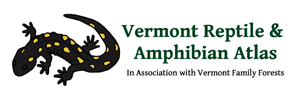In the News: May 2020
A brief round up of this month’s news and mentions of the Atlas:
May 18: “F&W: Turtles on the Roadway Need Your Help” from Saint Albans Messenger at https://www.samessenger.com/news/f-w-turtles-on-the-roadway-need-your-help/article_6f8ba722-9906-11ea-a519-13455e108690.html
“When you spot a turtle in the road, you may be able to help it across. First be sure you’re in a safe spot to stop and get out of your car, as human safety comes first,” said Andrews. “If you’re going to move a turtle off the road, always move it in the direction it was traveling. They know where they’re going.”
According to Andrews, most turtles can simply be picked up and carried across the road. However, if the turtle has no colorful lines, spots, or other markings, it is probably a snapping turtle, so people should not get too close to the animal to avoid being bitten. Snapping turtles’ necks are nearly as long as their shells. Instead of picking them up, people should push the turtle across the road with an object such as a shovel.
May 18: “Help Turtles Cross the Road” in the Times-Argus at https://www.timesargus.com/news/help-turtles-cross-the-road/article_fa73f69f-6d81-5e3f-a68a-4a16c551346e.html
The state is asking people to watch out for turtles crossing the road, and to report sightings of the animals to the Vermont Reptile and Amphibian Atlas.
The Vt. Fish & Wildlife Department stated Monday that it’s now the time of year when female turtles are on the move in search of places to lay their eggs. Many will cross roads to do this, and some will want to lay their eggs on the shoulders of the roadways, upping their risk of being hit by a vehicle.
May 20: “Leave native turtles in the wild” in Vermont Digger at https://vtdigger.org/press_release/leave-native-turtles-in-the-wild/
Each year, Vermonters encounter native turtles in the wild or crossing roadways, and some folks illegally bring them home as pets, but rarely does this story have a happy ending, according to the Vermont Fish and Wildlife Department….
To protect native populations, pet turtles that can no longer be cared for should be rehomed to a captive care facility.
May 20: “Look out for turtles on the roadway” in Mountain Times at https://www.mountaintimes.info/look-out-for-turtles-on-the-roadway/
Turtle nesting activity peaks this time of year, and drivers are urged to keep an eye out for turtles on the road – especially when driving near ponds and wetlands.
Fish and Wildlife and partners are working to collect data on road stretches that are hotspots for wildlife movement, including turtles. When those sections of road are upgraded or repaved, the roads may be altered to protect the species involved. To that end, they are working closely with VTrans, and with Jim Andrews from the “Vermont Reptile and Amphibian Atlas,” among other partners.
May 23: “Jensen Afield: on the Lookout for Turtles” in the Rutland Herald at https://www.rutlandherald.com/features/weekend_magazine/jensen-afield-on-the-lookout-for-turtles/article_8bf90f95-31e8-59e0-8942-d0af16b17b5d.html
Probably my favorite turtle tale took place way back in the late-1970s. I was traveling down Route 30 at a place just off the swamps of Lake Bomoseen at the northern end, and stopped. In front of me were at least four or five cars and a man standing in the middle of the highway, and a very big, prehistoric-looking turtle appearing very angry. It looked like the guy was about to pick up a snapping turtle.
May 27: “Turtles on the Roadway Need Your Help” in the Brattleboro Reformer at https://www.reformer.com/stories/turtles-on-the-roadway-need-your-help,605653
Vermont’s turtles on are on the move this spring, and the Vermont Fish and Wildlife Department is asking for the public’s help in keeping them safe. Female turtles are looking for places to deposit their eggs, sometimes choosing to lay them along the shoulders of roads, which can bring them into the path of motor vehicles….
Fish and Wildlife and partners are working to collect data on road stretches that are hotspots for wildlife movement, including turtles. When those sections of road are upgraded or repaved, the roads may be altered to protect the species involved. To that end, they are working closely with VTrans, and with Jim Andrews from the Vermont Reptile and Amphibian Atlas, among other partners.
As always, I should note links may not stay current as websites change and update their archives.

